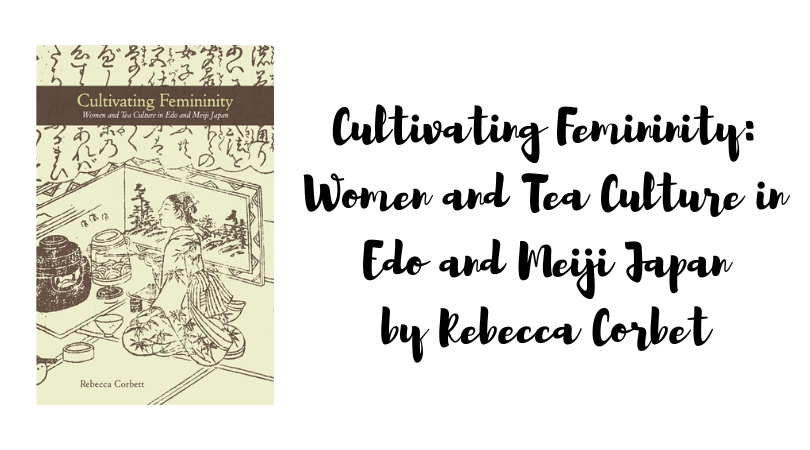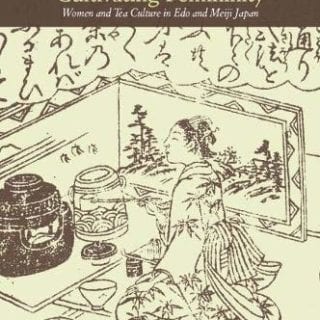I could have sworn that I had written a review of this book the first time that I read it. Somehow it slipped my mind! When it came up as assigned reading for Tea Book Club I had the perfect opportunity to revisit it. It really made an impression on me but I wanted my memory to be fresh for our group discussion.
Although I’ve never formally studied the Japanese tea ceremony, I do enjoy learning about it. That has led me to read quite a few books on the subject. In most of these books, it was explained that the tea ceremony was practiced by samurai men and that women did not participate in tea until the 20th century. I was listening to an episode of Tealife Audio where they interviewed Rebecca Corbett about her work and this book. I was surprised to hear the old adages about women and tea questioned. It was a fascinating discussion so I downloaded the book onto my Kindle the next day.
What Is It About?
In this book, Rebecca Corbett details her research and defends her position that women did partake in the tea ceremony during the Edo and Meiji periods. I don’t want to give everything away in this review but she does an outstanding job. Historical records, edification guides, illustrations, books, and other resources are all used to show that women have a much longer history with tea in Japan than we have been led to believe. Rebecca also explores the evolution of the tea ceremony from its very beginning up to today.
One of her closing remarks encapsulates how I felt about it perfectly.
To continue to deny the significance of women’s participation in Japanese tea culture prior to the Meiji period is a misguided reading of tea history and women’s history. Not all women were tea practitioners in the Edo period, but there were enough to matter. Their history warrants our attention. This book is a first step in recovering that history. In so doing, we increase our understanding of the history of Japanese tea culture, the position of women in Edo-period society, and the history behind the growth of women’s tea practice in modern Japan.
Rebecca Corbett, Cultivating Femininity: Women and Tea Culture in Edo and Meiji Japan
Would I Recommend It?
I would recommend this book to anyone with an interest in the history of the Japanese tea ceremony. Keep in mind that it is a scholarly work so it isn’t the snappiest of reads. That being said, I still found it very enjoyable. Rebecca listed her sources at the end of each chapter and I found this to be a good indicator for where and when to stop reading. That helped me to avoid information overload. I’m glad I had the chance to revisit this book and I am looking forward to discussing it with the other members of Tea Book Club.
The hardcover version is pricey but the Kindle version is free right now!
Have you read Cultivating Femininity: Women and Tea Culture in Edo and Meiji Japan? Let me know your thoughts in the comments below!
Cultivating Femininity: Women and Tea Culture in Edo and Meiji Japan
Cultivating Femininity offers a new perspective on the prevalence of tea practice among women in modern Japan. It presents a fresh, much-needed approach, one that will be appreciated by students and scholars of Japanese history, gender, and culture, as well as by tea practitioners.


Oooh, I have the Kindle version of this right now! I’m currently making my way through The Tale of Tea, but I can’t wait to read Cultivating Femininity. Have you read Making Tea, Making Japan? It’s on chado and I found it interesting as well!
I have! Making Tea, Making Japan is another book that I really enjoyed